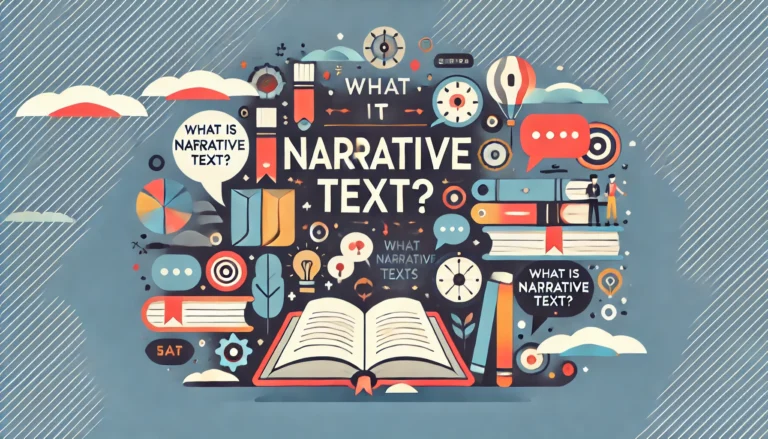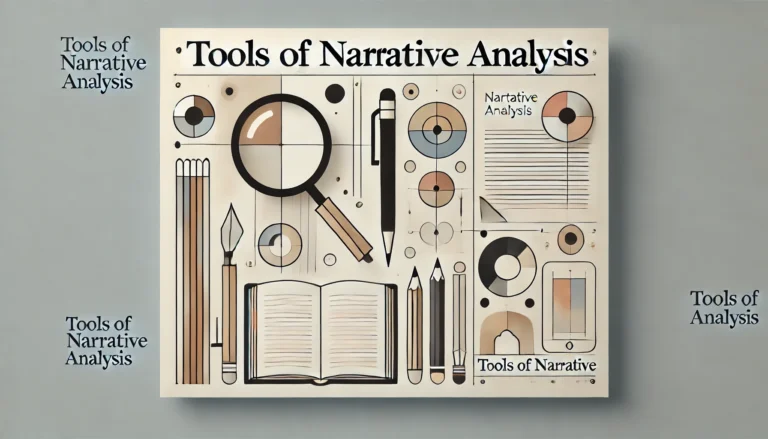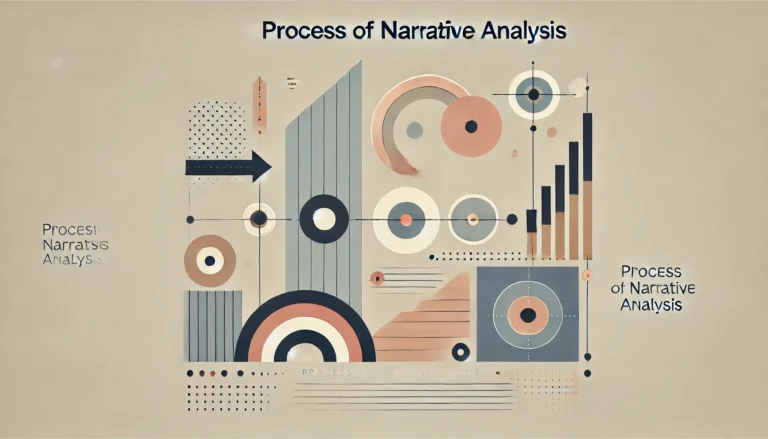Narrative Research
Narrative research is a type of qualitative research that dives into the world of stories and personal narratives. It aims to understand human experience by analyzing how people tell their own stories.
It emphasis is on life experiences as expressed through stories, how individuals construct meaning and give shape to their experiences through narratives, and the role of stories in shaping cultures and societies.
For Example: Studying the stories of immigrants to understand their experiences of adaptation or examining family histories to explore cultural traditions and identity formation.
Features of Narrative Research
- It tells a story or tale (i.e., presenting unfolding events from a point of view).
- It has a sense of movement or process (i.e., a before and after condition).
- It contains interrelations or connections within a complex, detailed context.
- It involves individuals or groups that engage in action and make choices.
- It has coherence, that is, the whole holds together.
- It has a temporal sequencing of a chain of events.
Characteristics of Narrative Research
- Experiences of an individual; social and personal interactions
- Chronology of experiences: past, present, and future experiences
- Life stories: Personal narratives gathered through field texts (data) that provide first-hand accounts of acts.
- Re-storying (or retelling or developing a meta-story) from the field texts
- Assigning codes to field texts based on themes or categories
- Integrating the context or location into the story or underlying themes
- Facilitating collaboration between the researcher and study participants, including the negotiation of field texts
What is Narrative Text?

Narrative textrefers to data in a story-like format that people apply to organize and express meaning and understanding in social life. Schooling, clinics, counseling centers, correctional facilities, hospitals, support groups, self-help organizations, and many other sites for storing experience provide narrative frameworks for conveying personal experience through time.
We find narratives in stories in novels, poems, myths, epic tales, dramatic performances, film, newspaper or media reports, sermons, oral histories, interviews, and the telling of events of a person’s life.
Examples of Narrative Text include;
- Autobiographies
- Biographies
- Life writing
- Personal narratives
- Narrative interviews
- Personal documents
- Life stories and life histories
- Oral histories
- Ethnographies
- Popular Memories
- Polish memoirs
What is Narrative Analysis?
Qualitative narrative analysis interprets a study group’s personal stories. Data is collected and structured using first-person narration to help researchers understand individuals’ experiences.
Narrative analysis is a type of qualitative study that involves analyzing data from case studies, questionnaires, observations, or other sources. The researchers write their findings and then review and analyze them.
To conduct narrative analysis, researchers must understand the background, setting, and socio-cultural context of the research subjects. This gives researchers a better idea of what their subjects mean in their narration.
It’s especially true in context-rich research where there are many hidden layers of meaning that can only be uncovered by an in-depth understanding of the culture or environment. Narratives are a type of qualitative research that studies one person by collecting stories, describing their experiences, and discussing their meaning.
Instead of merely focusing on interview words, narrative analysis also collects data on how the individual expressed themselves, what language they used to describe a situation or feelings, and their thoughts and motives.
Narrative analysis also examines how research participants wrote their stories. From interview to coding, keep the individual narratives together to preserve interview information.
Purpose of Narrative Analysis
- Narrative analysis aims to structure the collective accounts of a group of research participants.
- The objective is to transform individual narratives into codified and organized facts.
- The purpose is to enhance researchers’ comprehension of the effects of a specific event, feelings, or decision on the individuals involved.
- Researchers have the ability to uncover specific fundamental narratives that encompass the entirety of the human experience.
Tools of Narrative Analysis

We next examine three analytic tools: path dependency, periodization, and historical contingency.
Path Dependency
An analytic idea used in narrative analysis to explain a process or chain of events as having a beginning that triggers a structured sequence so that the chain of events follows an identifiable trajectory over time.
Periodization
Dividing the flow of time in social reality into segments or periods; a field researcher might discover parts or periods in an ongoing process (e.g., typical day, yearly cycle).
Historical Contingency
An analytic idea in narrative analysis that explains a process, event, or situation by referring to the specific combination of factors that came together in a particular time and place.
How to Code Narrative Analysis?
The process of coding narrative analysis often begins with either a deductive or an inductive coding system. Regardless of the strategy you use, it is essential to ensure that no vital data is lost throughout the organizing process.
Inductive Method
An inductive narrative method treats the entire narrative as a single piece of information or data. Utilizing an inductive storytelling strategy will encourage the study participant to develop their own story.
In order to comprehend the beginning and conclusion of a narrative, one must depend on cues provided by the individual involved. These may manifest as introductory and concluding discussions.
Deductive Method
Deductive narrative analysis involves beginning with a fundamental code framework, such as “summary,” “beginning,” “middle,” and “end.” Several research specialists developed their own techniques for structuring story research.
Irrespective of the strategy you choose, employing a deductive approach might aid in maintaining the coherence of the storyline when coding. Starting with a deductive approach permits the division of narrative components without compromising the coherence of the story.
Process of Narrative Analysis

The procedure of narrative analysis may vary differently across different research groups. However, in this article, we will guide you through the process of utilizing the Delve method[1].
Step 1 – Data Collection and Coding
The first step involves gathering the narratives you’ll be analyzing. This could include interviews (individual or focus groups) where participants share their stories, personal narratives like autobiographies, journals, or diaries, or analysis of cultural stories, myths, and legends.
Organize your narrative blocks using inductive, thematic, or narrative structure coding to organize stories by a life event. You’ll need to code them to identify key elements and patterns.
Example: Homeowners are subjected to narrative interviews, when they are prompted to recount the process of purchasing their own residential property.
Step 2 – Grouping and Theme Identification
To initiate the data analysis, you begin by thoroughly reviewing each of the narratives that have been categorized under the same life event. You will begin to notice reoccurring themes and patterns.
Example: When you read about each homeowner’s first-time home purchase experience, a few recurring themes emerge: “We were tired of renting,” “Our family thinks we need a large area,” and “We saved a decent amount for paying down payment.”
Step 3 – Interpretation of Themes
As the participant’s interviews progress, code the common storylines and organize them inside your narrative analysis framework. Utilize your programming skills to deconstruct the narrative into segments that may be collectively examined.
Example: In your interviews, the first portion normally discusses the pressures before buying a home that makes study participants consider homeownership. Decision-making issues commonly occur in the middle of the story. The story frequently ends with thoughts on the excitement, tension, or effects of home ownership.
Step 4 – Examine Story Structure
After organizing the narratives, you can see how participants arrange their stories and where differences and similarities arise.
Example: You learn in your investigation that many homebuyers wanted to buy before their circumstances allowed it. Most stories start with outside pressure.
Step 5 – Reread the Entire Narrative
Although it is essential to split narratives into smaller components for study, it is crucial to maintain a comprehensive understanding of the underlying plot. To do so, it is advisable to periodically pause and review every aspect of a code block’s narrative.
This will help in retaining participants’ expressions and guarantee that the central story remains the primary focus of the research.
Example: Through careful examination of the commonalities in the initial sections of participants’ stories, one can identify similar pressures. When examining the broader storyline, it becomes evident that these pressures result in comparable choices, regardless of the difficulties encountered.
Positive or negative pressures can affect homeownership feelings. Positive pressure like family support or excitement may make homeownership more appealing. Negative influences like costly rent or peer pressure may make people dislike homeownership. These factors may cause first homeownership feelings to diverge.
Step 6 – Presentation of Narrative
Upon careful data analysis, you have discovered the interconnections and differences between the storylines. It is possible to formulate a theory to account for the difference in narratives and identify one or two central narratives that describe the subjective experience of the story.
Example: Create a core narrative on how an individual’s initial feelings about buying a house affect their feelings after buying and residing in their first home.
Difference between Narrative Analysis and Case Study
Narrative analysis in Qualitative study is sometimes confused with case studies. Their main differences are:
- Although case studies tend to be lengthy and more in-depth than narrative research, they seldom ever give a broad picture of the subject’s life or experiences.
- Narrative analysis implies that researchers are observing a variety of instances that comprise the subject’s life, which is why it offers a more comprehensive perspective.
- Case studies, on the other hand, are in-depth examinations of specific topics, whereas narrative analysis examines single or multifaceted experiences over time.
[1] Delve is a software program designed to assist with qualitative data analysis and helps researchers organize, analyze, and extract insights from qualitative data effectively.






